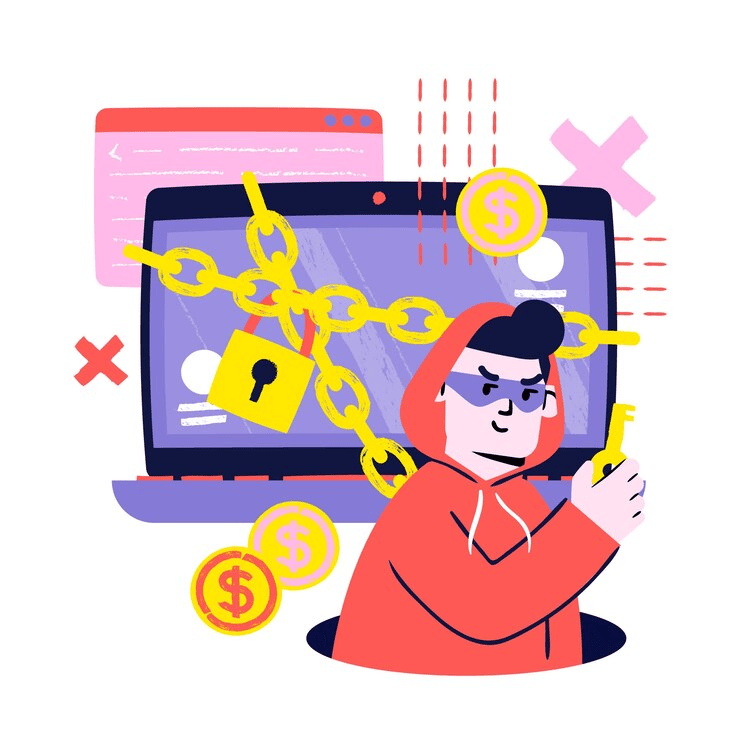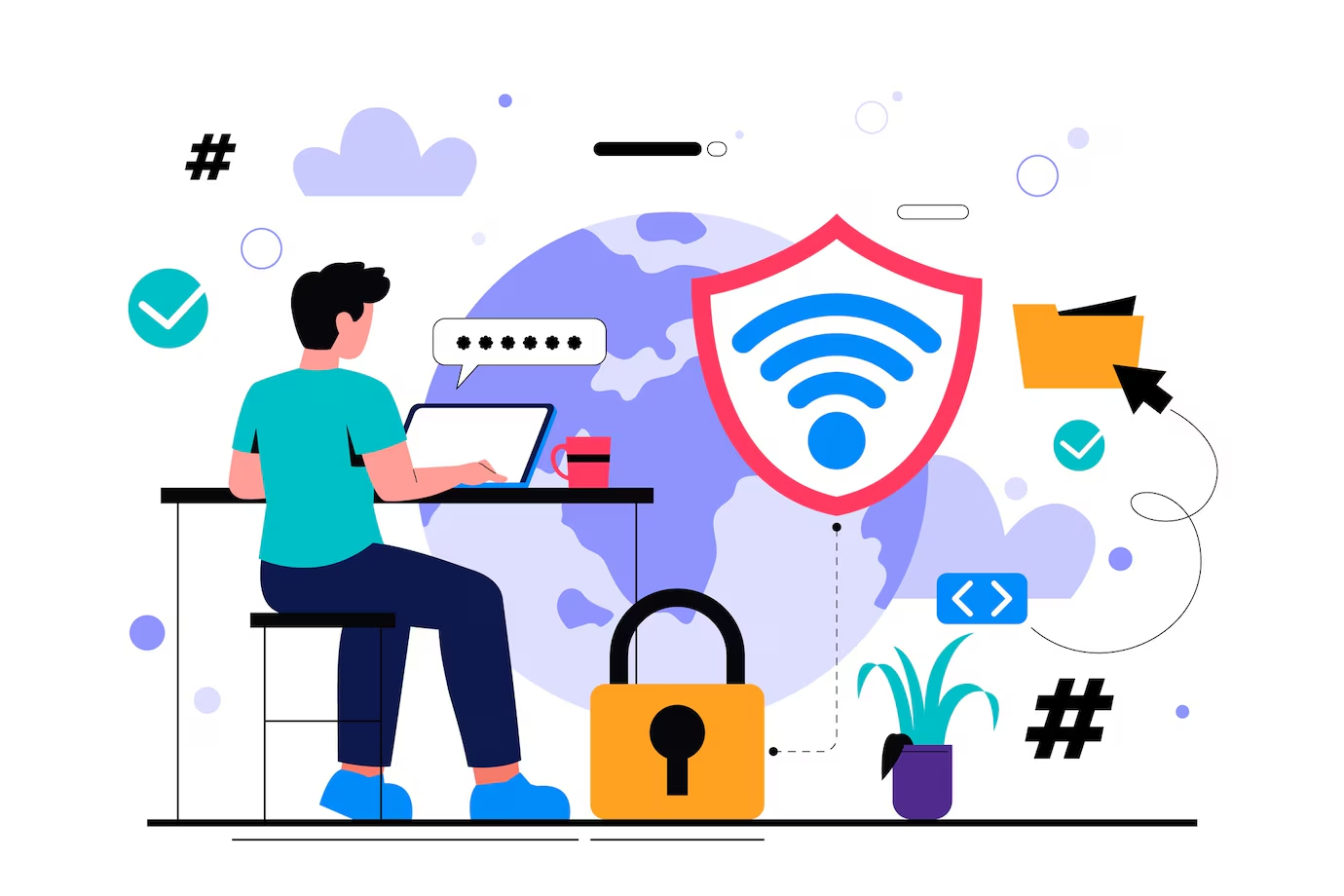
Beware of Digital Arrest Scams: A Beginner’s Guide to Staying Safe Online
A 40-hour digital arrest sounds terrifying, doesn’t it? That’s exactly what a popular, digital-first YouTuber and influencer experienced when scammers, posing as law enforcement officers, manipulated him out of his hard-earned money.
In 2024, there have been more than 6000 reports of digital arrest scams, and the Government of India has blocked over 6.69 Lakh SIM Cards and 1,32,000 IMEIs. This statistic calls for immediate action to increase cyber awareness in India.
At Cybersecurity Centre of Excellence (CCoE), we are making the Safer Internet Day count by championing cybersecurity awareness and safeguarding our online spaces. Read on to discover how digital arrest scams work, how to recognize red flags, and practical tips to protect yourself and others.

What are Digital Arrest Scams?
Digital arrest scams involve fraudsters posing as law enforcement officials to intimidate victims into believing they face serious criminal charges. The scammers create a sense of urgency and fear, claiming the charges can be dismissed if the victim shares sensitive bank details and transfers a large sum of money immediately. They skillfully build trust by mimicking legal procedures and presenting fake credentials, making their deception seem credible and forcing victims into compliance.
The Impact of Digital Arrest Scams
Digital arrest scams leave lasting consequences, affecting victims financially, emotionally, and socially:
-
Financial Loss: Victims often lose significant amounts of money, potentially draining savings and disrupting their financial stability, with long-term repercussions on their daily lives.
-
Emotional Stress: The psychological toll is immense. Victims experience fear, anxiety, and shame as scammers use threats of legal action or arrest to manipulate them. The trauma can lead to prolonged mental health issues like stress and insomnia.
-
Trust Issues: Once scammed, victims often develop distrust toward legitimate authorities, making them hesitant to seek help or cooperate in genuine situations. This mistrust can further isolate them and lead to missed opportunities for growth and support.
These impacts highlight the importance of awareness, preventive measures, and support for those affected by such scams.
How Digital Arrest Scams Work
Scammers carefully craft their personas, selecting targets they believe are most vulnerable. They often research victims beforehand to tailor their approach for maximum impact. They establish contact with the victims via emails, phone calls, messages or via other social media platform.
Once contact is established, the scammer presents a fabricated scenario, such as a package stuck at customs containing illegal substances or a critical legal complaint leading to criminal charges or an outstanding penalty for flouting traffic rules or the urgency to update KYC documents. They manipulate their victims using alarming language and by invoking a sense of urgency, creating fear that forces compliance.
Under this pressure, victims are coerced into actions like transferring money, sharing sensitive information, or isolating themselves from external communication. In extreme cases, victims have even been made to believe they were attending virtual court hearings, with scammers posing as judges or law officials. These tactics create an illusion of legitimacy, leaving victims feeling trapped, powerless and under a 'digital arrest'.

Common Types of Digital Arrest Scams
Scammers use various methods to exploit fear and urgency, making victims fall prey to their schemes:
-
Fraudulent Phone Calls: They often initiate contact through phone or video calls, carefully crafting a web of deception. They create a sense of urgency and fear by providing false information about impending legal action, penalties, or criminal charges.
-
Fake Law Enforcement Emails: Scammers craft emails that mimic official portals, complete with logos and legal-sounding language, to appear authentic.
-
Phishing Messages: Embedded phishing links within emails or messages direct victims to fake websites designed to steal sensitive information.
-
Social Media Threats: Scammers send alarming messages through platforms like Facebook or Instagram, pressuring victims into hasty decisions by threatening legal consequences.
-
Impersonation of Legal Authorities: Victims are coerced into video calls, where fraudsters impersonate police officers, judges, or lawyers, using pre-defined scripts to intimidate them into sharing personal details or transferring funds.
How to Recognize a Digital Arrest Scam

Spotting digital arrest scams requires attention to detail and knowledge of common red flags. Look out for suspicious communication methods, including fake links, QR codes, unverified apps, or messages sent via unsecured networks. Emails or messages often contain alarming language and exaggerated claims designed to trigger fear or excitement.
Typical warning signs include:
-
Urgent or Threatening Subject Lines: Scammers use urgency to pressurize their victims, examples include “Urgent Notice” or “Final Warning”.
-
Suspicious Sender Email: Check the sender’s address for inconsistencies. Official emails typically have domains like @gov.in or similar.
-
Grammatical Errors and Typos: Scammers often include deliberate mistakes, banking on victims overlooking them. Some ways of making such errors are using a double letter when not required, or interchanging letters, or adding more vowels in the word.
-
Calls for Immediate Action: Requests to transfer money or provide personal details to avoid arrest.
Examples of such Messages:
a. Urgent Notice: Legal Action Pending Against Your Name
b. Final Warning: Clear Legal Charges Immediately
What to Do If You’re Targeted by a Digital Arrest Scam
Getting caught in a digital arrest scam can be overwhelming, but you can protect yourself by taking the right steps:
-
Stay Calm: Scammers rely on panic to control their victims. Take a deep breath and remain composed. A calm response can disrupt the scammer’s plan and help you think clearly.
-
Call this toll-free helpline number 1930 for guidance and assistance by government officials.
-
Do Not Pay or Share Information: Never transfer money or reveal sensitive personal details, such as bank account information or passwords. Protect your data at all costs.
-
Verify the Source: If you receive a suspicious message, don’t respond immediately. Instead, visit the official website of the supposed authority or call their official contact number to verify the communication’s legitimacy.
-
Report the Scam: Report any suspected scams to your local cybercrime department or the government’s online grievance portal. Timely reporting helps authorities take action and may prevent others from falling victim.
By following these steps, you can safeguard your personal information and contribute to efforts to curb digital scams.
The Role of Cybersecurity in Preventing Scams

Effective cybersecurity practices are essential for protecting your personal information and preventing scams from disrupting your life. Here’s how you can stay secure:
-
Protect Personal Information: Keeping your sensitive data secure minimizes the risk of unauthorized access. When cybercriminals are blocked from accessing your data, their attempts to exploit it for scams are effectively thwarted.
-
Adopt Secure Online Practices: Strengthen your digital defenses by using strong, unique passwords and enabling two-factor authentication on all accounts. These habits act as barriers to potential intruders.
-
Use Cyber-Secure Software: Reliable antivirus programs like QuickHeal and McAfee protect your devices by detecting and blocking threats, ensuring that malware or phishing attempts do not compromise your security.
By integrating these practices into your daily life, you can create a robust defense against digital arrest scams and other cyber threats.
Preventing Digital Arrest Scams
Protect yourself from falling victim to digital arrest scams by following these essential tips:
-
Be Skeptical of Unsolicited Messages: Question unexpected messages, emails, or phone calls, especially those requesting personal information or money. Always verify the sender’s credibility.
-
Protect Personal Information: Avoid sharing sensitive details such as addresses, passwords, or contact numbers on unsecured websites or social media platforms.
-
Educate Yourself and Others: Stay informed about common scam tactics and share this knowledge with friends and family to create a network of awareness and protection.
-
Use Trusted Sources: For any legal or sensitive matters, rely only on official websites or verified contacts. Seek professional advice when in doubt, and avoid acting on information from unverified sources.
By adopting these preventive measures, you can significantly reduce the risk of being targeted by digital scammers.
Real-Life Examples of Digital Arrest Scams
Digital arrest scams have become increasingly sophisticated, targeting individuals across various demographics. Understanding real-life instances can help in recognizing and preventing such frauds.
Recognizing the Red Flags:
In December 2024, a man cleverly outwitted scammers posing as police officers by having his dog “answer” their fraudulent call. The scammers attempted to intimidate him with threats of legal action, demanding urgent payments to resolve fake charges. The scammers, frustrated by the lack of response, eventually hung up. This simple but creative response not only saved him from financial loss but also turned the scam into an amusing memory.
Falling Prey to Deception:
In a shocking incident, a 70-year-old retired banker from Bengaluru fell victim to a digital arrest scam, losing ₹89 lakhs over 11 days. Scammers, posing as law enforcement officers, falsely accused him of involvement in criminal activities. Using fear tactics and legal threats, they coerced the victim into transferring large sums of money under the pretense of avoiding arrest and resolving the charges, resulting in significant financial loss.
Stay Safe and Protect Your Digital Space
Preventing scams starts with vigilance and responsible online behavior. This Safer Internet Day, remember the golden rule: If it’s too good to be true, it probably isn’t true!
The Data Security Council of India (DSCI) has created a collection of pictorial stories to recognize cyber scams and a helpful guide that depicts the tips and tricks to avoid falling victim to these scams. Check it out here: The Cyber Chronicles
Spread awareness by sharing this blog with your family, friends, and colleagues. Together, let’s create a safer digital environment and protect our networks from falling victim to digital arrest scams. Stay informed, stay secure!





